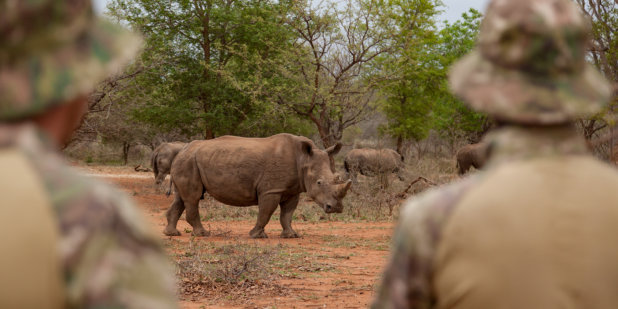- About
- Topics
- Story
- In-Depth
- Picks
- Opinion
- News
- Donate
- Signup for our newsletterOur Editors' Best Picks.Send
Read, Debate: Engage.
When talking about saving species from extinction and which efforts to be made to ensure their survival, one crucial – and obvious – factor for endangered animals is to reproduce in order to maintain and expand the size of the population and a viable genetic pool to tab. But what conditions are needed to provide an appropriate environment to breed? And what if species fail to reproduce in their natural habitat?

FAIRPLANET met with Dr. Imke Lüders, a well-known german veterinarian and expert in assisted reproduction of big mammals. Lüders is an expert on assisted reproduction of large mammals. Currently she works as veterinarian at Wuppertal Zoo and at Münster Zoo. In 2011 she founded „GEOlifes“, a global provider of assisted reproduction technologies, consulting and research.
„When we talk about conservation of species, one important factor of course is that the animals breed and reproduce. And beside the populations that are in the wild – we call them in situ populations – we also have ex situ populations, these are animals that are kept outside their natural habitat, usually in zoological facilities.
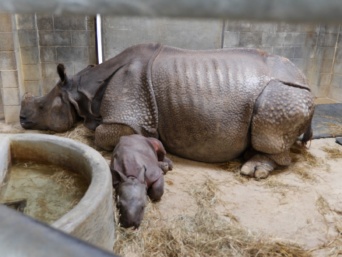 In order to reproduce these captive populations, the natural breeding is important, but in some instances, for example males are not willing to mate or the male is housed in a different zoo, we may also use the tool of so-called assisted reproduction.
In order to reproduce these captive populations, the natural breeding is important, but in some instances, for example males are not willing to mate or the male is housed in a different zoo, we may also use the tool of so-called assisted reproduction.
Assisted reproduction technologies comprise of a wide variety of tools. It starts with assessing the animals with ultrasound, and with semen collection of males, and then it goes further to more advanced techniques, such as artificial insemination, embryo transfer or in vitro embryo production. These are the more sophisticated tools. And these tools can be used to promote the reproduction of the species, if there is no natural mating or if the mating partners are not close together.
It has been postulated for a long time that the assisted reproduction techniques (A.R.T.) should be more implemented for conservation and for reproduction of animals and also for the genetic conservation of certain individuals, but yet in wildlife conservation they have been used only as a side tool, it's not yet really as researched as it should be. It has been used occasionally at large mammals; elephants are a good example, we had many births from articifial insemination in elephants.
For rhinos, we're just getting started, in wild fields we had some good results already, but it isn't as much used as it is for example in domestic animals or humans. Here, the techniques have been studied for a much longer time and much more intensive, because domestic animals are easier to handle and there's a big commercial interest as well.
Whereas in our wildlife there is basically no financial background and it's very difficult to access these animals. These are some of the problems why we haven't used the assisted reproduction technique yet as much as we would love to. But it is important to research into these technologies right now, since we still have a number of individuals available. So we can still do and must do the research now! We can collect for example sperm and oocytes (egg cells) and embryos, and actually preserve them. Because we are now seeing a large wave of extinction or decline of species.
So it is really urgently necessary to go deeper into the assisted reproduction techniques and to use the possibilities we have to promote populations to grow.
With the platform ProFetura-Alliance for Wildlife Conservation Breeding, we have created an NGO that focuses on advancing the research in reproduction and ART for endangered mammals “
The techniques have mainly been studies for mammals. But there are certain methods that work on different types of animals, like birds, reptiles, and even amphibians. There, very little has been done, it has just started because the assisted reproduction techniques can only be successfully applied if we know a lot of the reproduction physiology, and this is why we first need to understand each individual and how their reproduction works basically, and then we can implement the techniques.
So far little has been done here, but for example in the domestic animals again, it has been used on poultry. There've been lots of artificial insemination of poultry. We can use the techniques that have been developed for domestic animals, and transfer it in some instances to their wild or endangered counterparts. There have been also some experiences with crocodile insemination for example, but very little has been done in amphibians.
I think this will be the next step. But of course it depends on the funds again. People are more willing to spend money on the more sexy species like the big mammals, compared to a frog or any other amphibian. So, it's again, for a large part, the commercial interests that drives the advances.“
There is no official network unfortunately. But we are working on it. Through the veterinary service “Geolifes”, zoos may call a specialist to help with the breeding of a species. We would furthermore like to offer zoos the opportunity that if they have a genetically important and thus valuable individual that is not yet reproduced, but suddenly died, that we even harvest the sperm/ egg cells post mortem. In Germany, there is the Leibniz Institute of Wildlife Research in Berlin that offer it specifically for feline species, so whenever there's an endangered leopard or some other cat species that died, they will actually have the zoo to send them the testicles and ovaries post mortem to process them. They are able to harvest oocytes and sperm, and they also produce embryos then in the laboratory, which are then frozen and stored for the future. This is actually a very good project, but it's not commonly done for all the species, and I think we need to work on this urgently.
The minimum numbers of viable groups is always in discussion, it really depends on the species. If we look at trying to save the rhino, you could take the example from the past, at the end of the nineteenth century, there were only about some dozens of the White rhino left in South Africa, and today they are back to about 20,000.
with just a small number individuals it was actually possible to regrow the entire rhino population.
That shows that we should not give up hope yet for the Asian rhino at their low numbers, if we take action now. But it's really critical at that point because the reproduction interval of rhinos is quite long; a rhino cow can have a calf about every two and a half years, so if you add it up to the reproductive life span, which is from 6 to 8 years until about their mid-20s, early 30s maximum, then you can calculate that she can only have so many calves in her life.
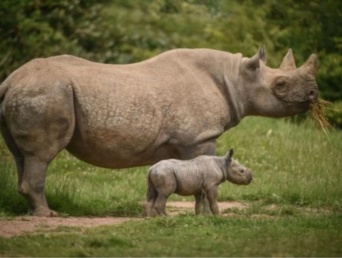
Therefore it's crucial to have a good number of individuals contributing. And another good reason of course is the genetic diversity, which is usually going to be smaller, the less individuals you have left in the end.
For other species, there are other predictions, always depending on so many factors, such as environment, climate, natural disasters, diseases… If you take all that into account, you will end up with many different projections for minimum viable population numbers.“
It's a very exciting addition to the work I'm doing at the moment, because beside the assisted reproduction we apply right now to increase offspring numbers by using these new technologies, we also want to conserve genetics for the future that we have available now.
The big plan is for Africa to go out and collect sperm and egg cells – even post mortem, i.e. after a rhino died naturally or was poached – and to put these into a cryo bank.
The idea is that in the case of the horrible poaching that takes place in South Africa now, we can still up to 24 hours – or 48 hours, depending on the ambient temperature – collect viable sperm and freeze them, and unlike blood or other cells or tissues that we freeze, these sperm is actually something that we directly can apply in breeding programs.
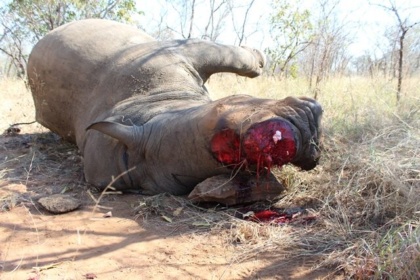
So these rhino genetics are really viable because they can be utilized straight away, right now, or they can be kept for decades deeply frozen and may be revived anytime.
Also, fortunately we still have large numbers of living White Rhinos available now, it's wise to collect sperm from a huge range of individuals.
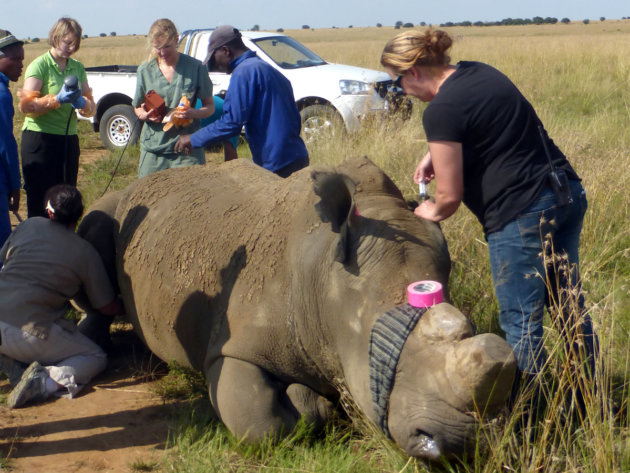
We can even collect egg cells on the female side, and produce embryos in vitro. And if we put these things into a cryobank and store them – the storage in liquid nitrogen is possible indefinitely –, we still have the opportunity one day if populations declining further to go back and take these genetics out and apply them for breeding programs. So, if we freeze them now these genetics won't be lost.“
Hemmersbach Rhino Force are the first that have access to the rhino carcasses, they do the full necropsy to find the projectile for example if gunshots are involved.
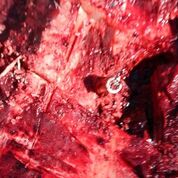
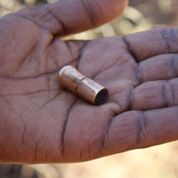
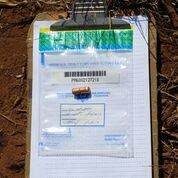
This is actually a perfect opportunity to collect the reproductive tracts at the same time, that means the testicles in the males and the ovaries in the females. That can be done by a trained person that is firm in doing the necropsy; they'll do the post mortem anyway. They will be instructed and just take the gonads (male or female) out and put them into a coolerbox basically to keep the temperature low and stable. The gonads are then transferred to a laboratory at the Hemmersbach Rhino Force Camp where we can process them, that means that from the testicles (the epididymis) or the ovaries we can extract the sperm or egg cells, respectively, and they'll then be processed and stored deeply frozen.
The idea came from Hemmersbach RhinoForce because they deal with those rhino carcasses on a day-to-day basis. if nobody is taking any samples or processing them, these animals will just be left out in the sun and the vultures will take their part and that's it. Therefore it will be an ideal opportunity to make some sense out of this senseless killing and try to save what we can save.“
„Yes, time is a crucial factor here. Usually the animals are shot at night or very early morning, and it depends very much on the climate if the sperm or oocytes are viable. In winter it is quite cool in South Africa, so we think that up to 48 hours, if the testicles are still intact, we can harvest viable sperm cells. Of course, the faster we get to it the better will be the results. There are reports of viable sperm cells after two days.
It's a bit more critical for the female side because the testicles are outside the body, just under skin, whereas the ovaries are within the abdominal cavity. Post mortem everything heats up, because the bacteria will grow and everything will start to warm up inside, and then the temperature gets quite critical for the egg cells to survive. Therefore we must act a bit quicker for the females; ideally within six hours, but there are reports of up the 20 hours that it's still possible to harvest viable oocytes from the ovary. It basically depends on how fast the carcass is found, but also keep in mind that it's a crime scene, so the police have to clear the carcass first, and only then we can do the post mortem and access it.“
„Once we got the testicles and the ovaries, the process is that we flush out the sperm cell from the epidymidis and use special solutions to keep the sperm happy, it's like a nutritional fluid that they will be transferred to, and if necessary there will be several washing steps involved if there is any blood etc. that we need to get rid of. Then the sperm will be cooled down in the fridge. From ambient temperature it will be slowly cooled down over two hours in the fridge to about 5 degrees, and only then it will be filled in special straws for the cryopreservation process.
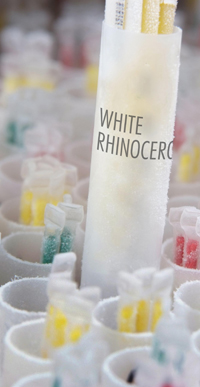
That is then involving liquid nitrogen, so the straws or the pallietes we use will be frozen further down, and they'll be finally transfered to the liquid phase of the liquid nitrogen. We have to use liquid nitrogen; we can't just put sperm or egg cells into a regular freezer because it won´t be cold enough. The temperature of liquid nitrogen is almost -200°C. That's the temperature we can store the sperm indefinitely in, so at least for decades or centuries, the sperm can be kept in this liquid nitrogen and will be still viable. When we want to use it again, we pretty quickly bring them back to body temperature again – and the sperm will move again.“
„We always try to keep our equipment and all the processes field friendly and cost effective, this is our credo basically, so we are always looking at this side. But the beauty of the liquid nitrogen is that you are completely independent from electricity. So, as long as somebody is refilling the liquid nitrogen on a regular basis, we're independent. It's more about the monitoring and the refilling of the nitrogen. The equipment we use is often more or less self-made or self-invented basically.“
Images: Ethan by Montgomery Zoo; Dr. Ian Player by The Rhino Project; Black Esatern Rhino with calve by Chester Zoo; White Rhinoceros cryo conservation by councilforresponsiblegenetics.org; Dr. Imke Lüders with elephant by IZW-Berlin; All other images by Hemmersbach Rhino Force
